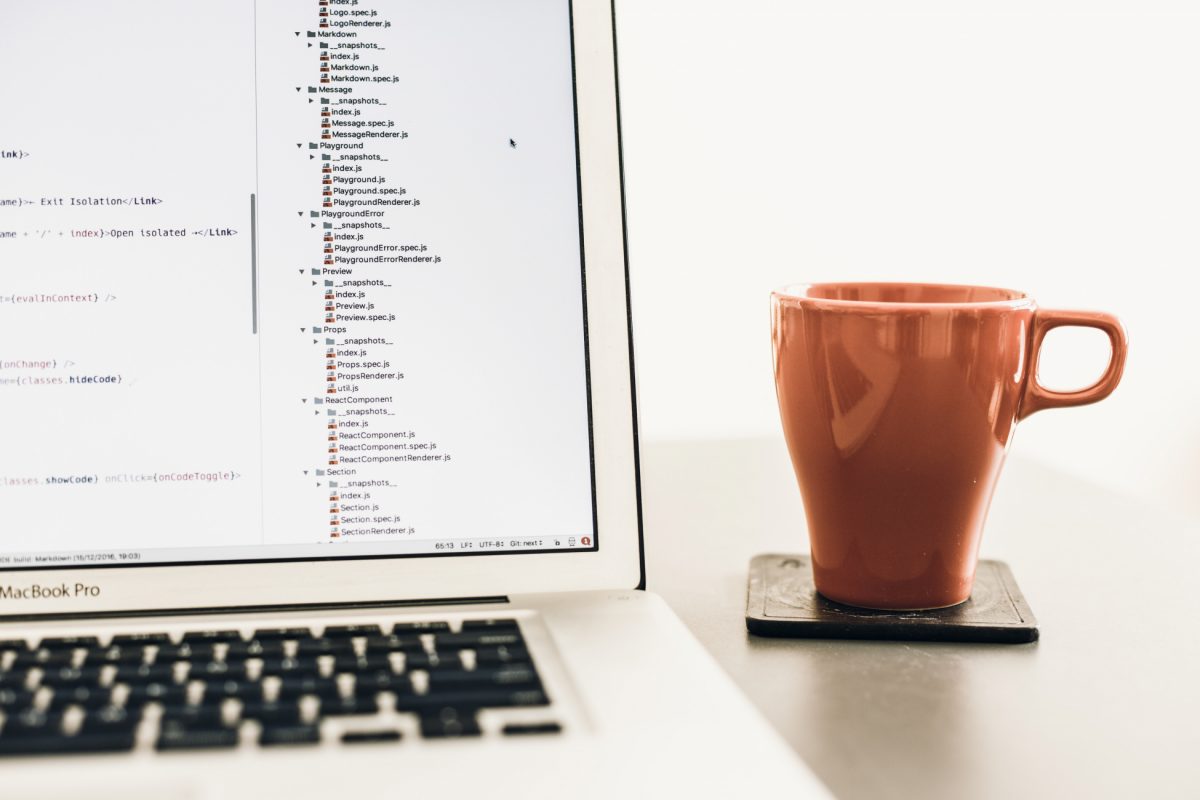Ever stumbled upon a term like “subprime mortgage” while scrolling through financial jargon that feels more at home in a sci-fi novel than in your everyday planning? Buckle up, because we're about to embark on an epic, no-holds-barred exploration of subprime mortgages—a wild ride through the world of lending that’s equal parts cautionary tale and surprising opportunity. Get ready for a humorous, engaging, and refreshingly down-to-earth look at what subprime mortgages are all about, why they matter, and how you can navigate them like a boss, even if you're a millennial or Gen Z hustler trying to make smarter financial moves.
What Is a Subprime Mortgage Table of Contents
Demystifying Subprime Mortgages: The Basics
How Subprime Mortgages Work: The Mechanics Behind the Magic
Subprime vs. Prime Mortgages: The Great Divide
Historical Context: The Rise and Fall (and Rise Again?) of Subprime Mortgages
The Highs and Lows: Pros and Cons of Subprime Mortgages
Common Terms and Jargon: Speak the Mortgage Lingo
The Borrower’s Journey: Qualifying for a Subprime Mortgage
Regulations and Protections: The Safety Net Underneath
The Real Cost of a Subprime Mortgage: Crunching the Numbers
Borrower Stories: Learning From Real Life
Strategies to Succeed with a Subprime Mortgage
Subprime Mortgages and You: Future Proofing Your Financial Health
Resources and Community Support: Your Next Steps
Your Financial Future: A Journey of Resilience and Growth
Demystifying Subprime Mortgages: The Basics
At its core, a subprime mortgage is a type of home loan offered to borrowers with less-than-stellar credit histories. Think of it as the “underdog” of the mortgage world—available to those who might not secure a traditional prime rate loan due to past credit blunders or a shaky financial record. With higher interest rates and sometimes stricter terms, these loans are designed to balance out the increased risk that lenders take on when offering them.
It might sound a bit intimidating at first—like trying to get into an exclusive club with a questionable past—but subprime mortgages exist to give more people access to homeownership. Just like a roller coaster, the ride can be a bit bumpy. However, with the right knowledge and attitude, you can handle the twists and turns and, who knows, maybe even turn a rough start into a story of redemption.
In simpler terms, subprime mortgages are for borrowers who don’t fit the mold of traditional, “perfect credit” applicants. They often come with a higher interest rate to compensate for the risk, but they can also serve as a stepping stone to rebuilding your credit and eventually upgrading to a prime mortgage. So, if you’ve ever been told you’re “too risky” by conventional standards, this might just be the financial lifeline you need.
How Subprime Mortgages Work: The Mechanics Behind the Magic
Let’s peel back the curtain on subprime mortgages. Unlike prime mortgage loans that feature the best interest rates and most favorable terms, subprime mortgages target borrowers who have blemishes on their credit reports—late payments, defaults, or other financial hiccups that make lenders nervous.
To compensate for this additional risk, subprime mortgages typically have higher interest rates, which means you'll end up paying more over the life of the loan. However, not every subprime mortgage is created equal. Some come with adjustable rates that may start low but can skyrocket later, while others might have fixed rates that are higher from the outset.
Imagine being offered two pizzas: one with premium toppings at a standard price (the prime mortgage) and another with extra toppings and a side of spicy sauce (the subprime mortgage). The latter costs more because it has extra flair meant to cover potential future “spice” (or risk, in our case). That’s essentially what lenders are doing. They’re adding a premium to your loan if your credit tells a story of financial misadventures.
Moreover, the underwriting process for subprime mortgages can be more rigorous. Lenders might require additional documentation, a higher down payment, or even a co-signer who has a stronger credit history. In a nutshell, if you’re applying for a subprime mortgage, be prepared to provide a thorough look into your financial life.
Subprime vs. Prime Mortgages: The Great Divide
One of the easiest ways to understand subprime mortgages is by contrasting them with their well-behaved counterparts—the prime mortgages. If prime mortgages are like that friend who always finishes first in every race, subprime mortgages might be the underdog who’s still training hard and trying to catch up.
Here’s the lowdown:
- Interest Rates: Prime mortgages offer lower interest rates, rewarding borrowers with solid credit histories. Subprime loans, on the other hand, come with higher rates to offset the lender’s risk.
- Credit Requirements: Prime borrowers enjoy a smoother application process with minimal extra documentation. Subprime borrowers might have to jump through extra hoops, proving their reliability through additional paperwork.
- Loan Terms: Prime loans often come with more flexible terms and lower fees, while subprime mortgages can include hidden costs and fees that add to the overall expense.
- Risk and Reward: For subprime borrowers, the promise of homeownership is balanced by the possibility of financial strain due to higher repayments, making it crucial to weigh the risks and benefits carefully.
While subprime mortgages can be a lifeline for those who need it, the extra cost means they’re not a one-size-fits-all solution. It’s like choosing between an economy seat and first class on a flight—you get where you need to go, but the comfort level and overall cost differ significantly.
Historical Context: The Rise and Fall (and Rise Again?) of Subprime Mortgages
No discussion of subprime mortgages would be complete without addressing their star role in the 2008 financial crisis. Picture a domino effect where a slump in the housing market, coupled with risky subprime lending practices, led to a massive meltdown that rattled global markets. Years later, the legacy of that crisis still looms large, influencing how today’s lending practices are structured.
Back then, lenders were often more than a little greedy—pumping out loans to anyone who might eventually collect a down payment. The fallout was a stark lesson in the dangers of unchecked lending, and it resulted in tighter regulations, increased scrutiny, and a more cautious approach to subprime loans. However, the market has evolved, and while subprime mortgages are still available, they are offered under much stricter guidelines.
Even with a history marked by controversy, subprime mortgages have not entirely vanished. Instead, they’ve been rebranded and restructured to serve a niche of borrowers who need them, albeit at a premium. For many, this means the difference between renting indefinitely and taking the plunge into homeownership—albeit with a bit more risk and a few extra numbers on the interest rate chart.
The Highs and Lows: Pros and Cons of Subprime Mortgages
Like every financial product, subprime mortgages come with their unique set of benefits and drawbacks. Here's a no-BS breakdown:
Pros: The Unexpected Perks
- Access to Homeownership: For many who have been living in the shadows of a less-than-stellar credit score, subprime mortgages offer a tangible opportunity to make homeownership a reality.
- Credit-Building Opportunity: Successfully managing a subprime loan can boost your credit score over time, potentially opening the door to more favorable financial products in the future.
- Flexible Underwriting: Lenders may look beyond your credit score by considering other factors—like proof of income and employment stability—when assessing your application.
Cons: The Price You Pay
- Higher Interest Rates: These rates mean you’ll pay more in interest over the life of your loan, making homeownership more expensive in the long run.
- Stringent Terms: Expect stricter conditions, such as larger down payments and additional fees, which can put a strain on your monthly budget.
- Potential for Negative Equity: If property values drop, you might end up owing more than your home is worth—this is a risk that's amplified in subprime loans compared to prime mortgages.
In essence, subprime mortgages walk a tightrope between giving you a dream home and saddling you with long-term financial challenges. Think of it like ordering a latte with extra foam—sure, it might look awesome on Instagram, but you have to contend with the hefty price tag and the inevitable energy crash when you can’t afford your monthly latte fix.
Common Terms and Jargon: Speak the Mortgage Lingo
To feel like a bona fide pro in the mortgage game, it helps to understand some of the key terms that swirl around subprime lending:
- Adjustable-Rate Mortgage (ARM): A loan where the interest rate can change over time, often starting with a lower rate that escalates based on market conditions. Many subprime loans fall into this category.
- Fixed-Rate Mortgage: Unlike ARMs, these mortgages have an unchanging interest rate for the life of the loan—though subprime versions tend to have higher initial rates.
- Down Payment: The portion of the home’s price you pay upfront. Subprime mortgages often require a larger down payment to reduce the lender’s risk.
- Credit Score: This three-digit number is the passport to your financial world. For subprime borrowers, a lower credit score can mean higher loan costs.
- Default: When you're unable to make your mortgage payments on time, a default can trigger a series of financial repercussions, including foreclosure.
Mastering this lingo not only helps you feel more confident when discussing your options but also ensures you’re not left in the dark when it comes to the fine print on your loan documents.
The Borrower’s Journey: Qualifying for a Subprime Mortgage
If you’re wondering whether you’re eligible for a subprime mortgage, the process generally starts with a pretty honest self-check. Credit scores, income history, and total debt load are the triple-threat metrics lenders scrutinize.
For many, qualifying means accepting that your past financial slip-ups aren’t the final word on your homeownership dreams. Lenders look at compensating factors like steady employment, a reliable income stream, and even the potential resale value of the home you’re buying.
Here’s a step-by-step look at what the application process might entail:
Step 1: Assess Your Credit Profile
Begin by checking your credit score and reviewing your credit report for any errors or outdated information. It might sting a bit, but knowing where you stand is the first crucial step.
Step 2: Gather Your Financial Documentation
Lenders will ask for proof of income, tax returns, bank statements, and employment history. Think of it as assembling the pieces of your financial puzzle—each document has its part to play in painting the full picture.
Step 3: Shop Around for Lenders
Don’t settle for the first offer you receive. There are lenders who specialize in subprime loans, and comparing quotes can help you snag the best possible terms—even if they come with higher interest rates.
Step 4: Prepare for a Higher Cost of Borrowing
Understand that a subprime mortgage comes with its premium. Run the numbers to see how different interest rates and fees will affect your monthly payments and overall repayment plan.
Remember, the goal is to secure not just any mortgage, but one that sets you up for future success. Successfully handling a subprime mortgage can be a springboard to improving your credit and moving on to better terms down the road.
Regulations and Protections: The Safety Net Underneath
Post-2008, the financial world saw a major remodeling of the rules surrounding subprime lending. Regulatory reforms were introduced to protect borrowers from predatory practices and to ensure transparency in the lending process.
Today, several safeguards are in place:
- Stricter Underwriting Standards: Lenders now have to jump through more hoops before approving a subprime loan, ensuring that borrowers can realistically handle the monthly payment commitments.
- Disclosure Requirements: Laws now require that all fees, interest rates, and terms are clearly communicated, so there are no nasty surprises down the line.
- Regulatory Oversight: Government agencies and independent bodies monitor lending practices, making it harder for predatory tactics to slip through the cracks.
While these reforms have certainly made the process safer for borrowers, they also mean that lenders are very cautious—sometimes to the point of being overly conservative. For borrowers willing to put in the extra legwork and documentation, these protections offer peace of mind, knowing that you have a safety net beneath your financial decisions.
The Real Cost of a Subprime Mortgage: Crunching the Numbers
Let’s talk about money—because at the end of the day, that’s what subprime mortgages are all about. The higher interest rates associated with these loans mean that you'll end up shelling out more cash over time. It might feel like you're signing up for a subscription that just keeps getting pricier.
Here are a few key components that contribute to the cost:
- Interest Payments: These are the regular payments you make that go toward the interest on your loan. With subprime rates, these payments can be significantly higher compared to a prime mortgage.
- Fees and Charges: Lenders may add origination fees, processing fees, or even prepayment penalties. Reading the fine print is absolutely crucial here.
- Loan Term: The number of years you have to repay the loan can also affect the overall cost. A longer term might lower your monthly payments, but it could mean paying more interest in the long run.
A smart move? Use an online mortgage calculator to run different scenarios. It’s like trying on outfits before a big night out—make sure you know how each combination affects your budget, and pick the one where you feel both confident and comfortable.
Borrower Stories: Learning From Real Life
Sometimes the best way to understand a complex financial product like a subprime mortgage is to hear from the people who’ve been in the trenches. Meet Alex, Jamie, and Taylor—three individuals who turned their subprime challenges into valuable life lessons.
Alex’s Story: From Financial Fumbles to Future Wins
Once known for a string of bad credit choices, Alex was left with fewer options on his mortgage journey. When a subprime mortgage was the only path home, he decided to embrace it with a healthy dose of caution. With a detailed plan for budget management and a commitment to improving his credit, Alex turned his situation around. Today, he's not only a proud homeowner but also a financial mentor to friends navigating similar challenges.
Jamie’s Story: A Balancing Act of Opportunity and Risk
Jamie was initially hesitant about diving into a subprime mortgage, worried it might trap her in a cycle of debt. However, after extensive research and financial counseling, she discovered strategies to mitigate the high costs. Jamie opted for a fixed-rate subprime mortgage, which allowed her to budget effectively while gradually rebuilding her credit profile. Her journey is a reminder that with careful planning, even risky financial paths can lead to solid future rewards.
Taylor’s Story: Learning to Love the Long Haul
For Taylor, a subprime mortgage wasn't just about purchasing a house—it was about a fresh start and an opportunity to prove that his past did not define his future. He tackled the challenge head-on with a mix of fiscal discipline and entrepreneurial spirit. Today, Taylor shares his experiences through online communities, offering tips for budgeting, debt management, and negotiating better terms even in less-than-ideal situations.
These borrower stories reflect the multifaceted nature of subprime mortgages. They’re not a one-way ticket to financial doom but a chance to rebuild and emerge stronger when navigated with care, reality checks, and a touch of daring.
Strategies to Succeed with a Subprime Mortgage
Navigating the labyrinth of a subprime mortgage can feel like trying to beat the boss level in your favorite video game—but fear not! Here are some real-world strategies to turn those high-interest nightmares into success stories:
1. Boost Your Credit: The Ultimate Power-Up
Even if you're starting in the subprime league, never underestimate the power of a better credit score. Pay down existing debt, make timely payments, and consider a secured credit card to gradually build a stronger financial profile.
2. Shop Around: Compare, Compare, Compare
Not all lenders are cut from the same cloth. Some might offer more competitive terms than others, so grab your favorite comparison tool and start shopping. Think of it as hunting for that secret deal in a clearance sale.
3. Seek Professional Advice
Mortgage brokers, financial advisors, and credit counselors are the Avengers of the finance world—they can help you map out a strategy that suits your particular situation. Their expertise might be the deciding factor between a subprime struggle and financial triumph.
4. Plan for the Long Haul
Understand your loan’s structure and plan your finances accordingly. Setting a strict budget, forecasting potential interest rate hikes, and exploring refinancing options once your credit improves will help you maintain control even when the road gets rocky.
Implementing these strategies can transform your subprime mortgage from a potential setback into a stepping stone toward long-term financial freedom. It’s all about knowing your game plan and staying one step ahead.
Subprime Mortgages and You: Future Proofing Your Financial Health
While subprime mortgages are often portrayed as risky ventures, they can also be a catalyst for future financial success. The key is to view them as a temporary tool rather than a permanent solution. With discipline, smart planning, and the will to improve your financial standing, you can use a subprime mortgage as the foundation to eventually access better, more favorable loan options.
Future-proof your financial health by treating your subprime mortgage like a stepping stone. As your credit score improves and your financial acumen grows, keep an eye out for opportunities to refinance into a prime mortgage with a lower interest rate. This proactive approach ensures that you're not just stuck in one financial tier, but you're actively working to elevate your overall economic well-being.
Resources and Community Support: Your Next Steps
The journey through subprime mortgage territory can sometimes feel lonely, but remember—you’re not in it alone. There are countless resources, communities, and support systems available to help you better understand your options and guide you toward financial recovery.
Educational Resources: Start by exploring online courses, webinars, and financial literacy websites that offer in-depth insights into managing credit, budgeting, and refinancing strategies. Knowledge is power, and a little research can go a long way in demystifying mortgage terminology and concepts.
Community Forums & Support Groups: Join online communities where individuals share their experiences with subprime mortgages. Platforms like Reddit, Facebook Groups, and dedicated financial forums are great places to swap stories, learn from others’ mistakes, and get practical advice.
Professional Guidance: Don’t hesitate to consult with financial advisors, mortgage brokers, or credit counselors. These professionals can offer personalized advice tailored to your unique financial situation, helping you craft a strategy that works for your current needs and future dreams.
Local Workshops and Seminars: Many nonprofit organizations and local financial institutions offer free workshops on financial literacy. These sessions can be invaluable, providing personal interactions, networking opportunities, and hands-on learning experiences.
By tapping into these resources, you can arm yourself with the tools necessary to not only survive a subprime mortgage but to thrive in a dynamic and ever-changing financial landscape.
Your Financial Future: A Journey of Resilience and Growth
Embracing a subprime mortgage is not a sign of financial defeat—it’s a strategic choice made in the pursuit of homeownership despite past imperfections. With determination, resourcefulness, and a willingness to learn, you can navigate the challenges and eventually upgrade your financial standing.
There will undoubtedly be bumps along the way, but every late-night budgeting session, every extra payment, and every moment of financial education contributes to building a more resilient future. Remember, your credit history is just one chapter in your financial story; it doesn’t dictate your entire narrative. Each smart decision and every step forward is a testament to your ability to overcome obstacles and pave the way to a brighter financial tomorrow.
So, whether you're taking your first step into homeownership or strategizing to improve your credit and refinance later on, know that your journey—though fraught with challenges—has immense potential for growth and transformation.
Frequently Asked Questions About Subprime Mortgages
We know that diving into the world of subprime mortgages can raise a lot of questions. Below, we tackle some of the most frequent inquiries to help clear the fog and empower you with the knowledge to make informed decisions.
1. What exactly is a subprime mortgage?
A subprime mortgage is a home loan designed for borrowers with lower credit scores or nontraditional credit histories. Due to the increased risk associated with these borrowers, these mortgages come with higher interest rates and stricter terms compared to prime mortgages.
2. Why would anyone choose a subprime mortgage?
For many, a subprime mortgage is the gateway to homeownership when traditional loans are out of reach. It provides access to the property market even if your credit history isn’t perfect, although it comes with higher costs.
3. How do subprime mortgages differ from prime mortgages?
Prime mortgages are available to borrowers with excellent credit and offer lower interest rates, while subprime mortgages are for borrowers with blemished credit. The latter come with higher interest rates and more rigorous terms to compensate for the increased risk.
4. Can a subprime mortgage help improve my credit score?
Yes. Successfully managing repayments on a subprime mortgage can gradually improve your credit score over time, potentially opening doors to more favorable financial products.
5. What are the risks involved in taking out a subprime mortgage?
The primary risks include the higher interest rates and additional fees, which can lead to higher monthly payments and a greater overall cost. Additionally, if property values decline, you may end up owing more than your home is worth.
6. How can I minimize the risks associated with a subprime mortgage?
To mitigate risks, work on improving your credit, shop around for the best rates, and consider consulting financial professionals who can guide you through refinancing options when your financial situation improves.
7. Are subprime mortgages subject to government regulations?
Yes. In the wake of the 2008 financial crisis, tighter regulations and consumer protections have been implemented to ensure transparency and fairness in the subprime lending process.
8. What documents do I need to qualify for a subprime mortgage?
Typically, lenders will require detailed documentation such as recent pay stubs, tax returns, bank statements, proof of employment, and an overview of your credit history.
9. Is refinancing an option for subprime mortgages?
Absolutely. Many borrowers use subprime mortgages as a stepping stone, with plans to refinance into a conventional, lower-rate loan once their credit improves.
10. Who do I contact for more personalized advice on subprime loans?
Start by reaching out to a reputable mortgage broker, financial advisor, or credit counselor who specializes in subprime lending. They can provide tailored advice based on your unique financial situation.
Embracing Your Financial Journey with Confidence
Navigating a subprime mortgage might feel like walking a tightrope over a canyon of credit scores and interest rates, but with a dash of humor, a pinch of determination, and the right resources at your fingertips, you can make smart financial decisions that set your future on a positive trajectory.
Every smart payment, every carefully reviewed document, and every question you ask is a step toward reclaiming control over your financial life. Whether you're stepping into homeownership for the first time or looking to rebuild your financial reputation after a few bumps along the way, know that you’re not defined by your past credit missteps. Instead, you’re forging a new path filled with learning, growth, and promising opportunities.
So, take a deep breath, equip yourself with knowledge, and dive into the world of subprime mortgages with confidence. Your journey may have challenges ahead, but it's also filled with potential—a future where financial empowerment is not just a dream, but a reality you build step by step.
Remember: sometimes the unconventional path holds the greatest rewards. Embrace your financial journey with style, grit, and a smile, and turn those high-interest rates into high points on your roadmap to success.













